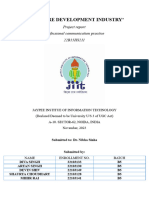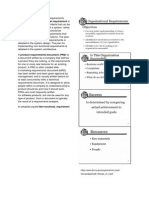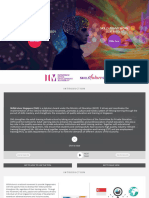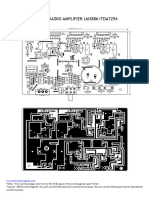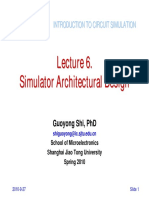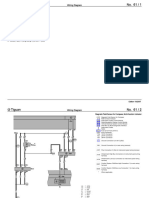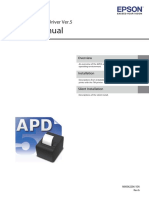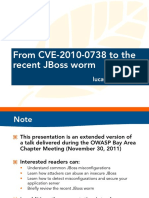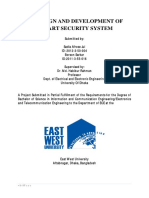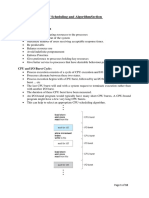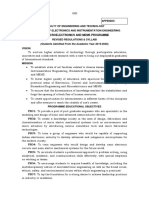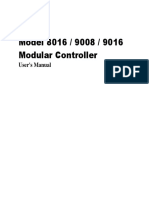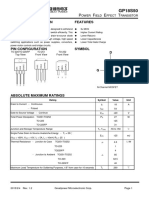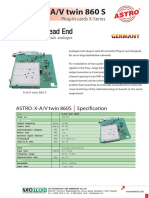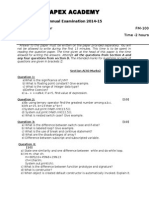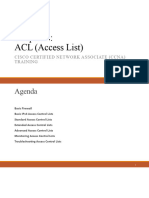SKILLS FRAMEWORK FOR INFOCOMM TECHNOLOGY
TECHNICAL SKILLS & COMPETENCIES (TSC) REFERENCE DOCUMENT
TSC Category Development and Implementation
TSC Title Applications Development
TSC Description Develop applications based on the design specifications; encompassing coding, testing, debugging, documenting and reviewing and/or refining it across the application development
stages in accordance with defined standards for development and security. The complexity of the application may range from a basic application to a context-aware and/or augmented
reality application that incorporates predictive behaviour analytics, geo-spatial capabilities and other appropriate algorithms. The technical skill includes the analysis and possibly the
reuse, improvement, reconfiguration, addition or integration of existing and/or new application components.
Level 1 Level 2 Level 3 Level 4 Level 5 Level 6
TSC Proficiency
Description ICT-DIT-3002-1.1 ICT-DIT-4002-1.1 ICT-5002-1.1
Develop basic applications Plan the application Lead large-scale or
with secure features, run development process, business-critical application
routine application tests, and program applications and development projects and
conduct debugging to secure features, applying explore the incorporation of
resolve errors suitable debugging analytics and advanced
techniques to resolve capabilities to enhance the
complex errors application
Knowledge Application development Software development Long term vision and
tools and methodologies life cycle models for immediate objectives of
Syntax and structures of applications the application
commonly-used Broad range of Key characteristics, pros
programming languages application development and cons of different
and their respective frameworks, tools and application development
Application methodologies, and their methodologies
Programming Interfaces various uses New and emerging
(API) A range of programming trends in application
Tools and techniques languages and development
required for performing effectiveness in different Advanced programming
coding and/or contexts languages and tools,
programming Types of software or and their uses in
Organisational application testing different contexts for
standards in application techniques, and pros different application
development and and cons of various tests features
documentation Internal and external Applicability and
Process of embedding quality, safety and reusability of externally
user interface templates security standards or developed codes and
Software tests and benchmarks in components
process for executing application development Relative criticality or
unit testing Quality assurance importance of different
Application development practices for application application components
standards development review or properties
Commonly-encountered Range of tests and Various debugging
application errors testing techniques for processes and suitability
applications
©SkillsFuture Singapore and Infocomm Media Development Authority
Effective Date: January 2020, Version 2.1 Page 1 of 4
SKILLS FRAMEWORK FOR INFOCOMM TECHNOLOGY
TECHNICAL SKILLS & COMPETENCIES (TSC) REFERENCE DOCUMENT
Basic debugging tools Multiple debugging for different contexts
and techniques techniques and tools and Feasibility analysis for
Security threats and suitability for different incorporating new,
vulnerabilities facing contexts complex or advanced
software and Feasibility analysis for features or capabilities
applications reconfiguration, Measures of software
Functional requirements integration or portability complexity
of security features of applications Industry best practices in
Emerging security secure software and
threats and impact on applications
software and development
applications New and emerging
Evaluation guidelines for secure software and
software and applications
applications security development techniques,
Types of secruity and tools and approaches
secure features for New and emerging
software and techniques for seamless
applications software deployment
Virtual machines and
containerisation of
application code set-up
for consistant
deployment and
utilisation
Abilities Develop and/or program Create a project plan to Evaluate implications of
simple applications or guide the application new and emerging
components according development process trends on application
to agreed specifications Determine the server, development
Re-use externally scripting and mark-up Plan large-scale or
developed components languages required to business-critical
in creation of develop applications application development
applications Determine key security projects
Identify possible security requirements, standards Determine application
features required to and features for the development
address potential application methodologies, tools,
security risks and Develop applications in and programming
vulnerabilities line with design languages
Embed user interface specifications, utilising a Manage
templates into range of tools, interdependencies of
applications according to methodologies, multiple work streams
design guidelines and programming, and and complexity in
specifications externally developed applications
Run routine software codes development
©SkillsFuture Singapore and Infocomm Media Development Authority
Effective Date: January 2020, Version 2.1 Page 2 of 4
SKILLS FRAMEWORK FOR INFOCOMM TECHNOLOGY
TECHNICAL SKILLS & COMPETENCIES (TSC) REFERENCE DOCUMENT
tests to identify defects, Design templates for Establish an efficient and
errors and/or security reusable user interface effective application
vulnerabiltiies patterns for applications testing process that
Perform unit testing of Assess suitability of includes vulnerability
each unit of the codes to various software security assessments and secure
ensure that the code and software testing testing
works according to techniques and select Oversee application
application requirements appropriate tests, development
Apply basic debugging according to the approaches and plans to
tools and techniques to application properties of ensure achievement of
reproduce, simplify and interest quality, safety and
resolve application Evaluate test results security standards
errors or problems against desired Establish debugging
Make simple revisions performance, standards, process for application
and modifications to and usability outcomes issues encountered
existing application Analyse application Review
Add new application and/or security issues recommendations to
components or features, encountered, and improve the overall
according to endorsed determine actions functionality, usability
recommendations required to resolve and security of
Document the internal identified issues applications, against
design of the application Resolve functional, cost, efficiency and
for future maintenance performance, and viability considerations
and enhancement security issues in Evaluate new
Write application applications technologies, secure
programming interfaces Plan a series of steps coding and practices that
(APIs) which potentially will enhance security
Perform bundling of includes reconfiguration, capabilities in
application code and integration, removal or applications
relevant files to enhance addition of application development
the deployment and components to enhance Evaluate feasibility and
utilisation of the the application's incorporate predictive
application code functionality, usability behaviour or data
and security analytics, geo-spatial
Plan bundling of capabilities and other
application code and advanced features in
relevant files to enhance application development
the deployment and
utilisation of the
application code
Set up virtual machine
instances and
containerisation for the
deployment and
©SkillsFuture Singapore and Infocomm Media Development Authority
Effective Date: January 2020, Version 2.1 Page 3 of 4
SKILLS FRAMEWORK FOR INFOCOMM TECHNOLOGY
TECHNICAL SKILLS & COMPETENCIES (TSC) REFERENCE DOCUMENT
utilisation of the
application code across
multiple infrastructures
Range of Application
©SkillsFuture Singapore and Infocomm Media Development Authority
Effective Date: January 2020, Version 2.1 Page 4 of 4


